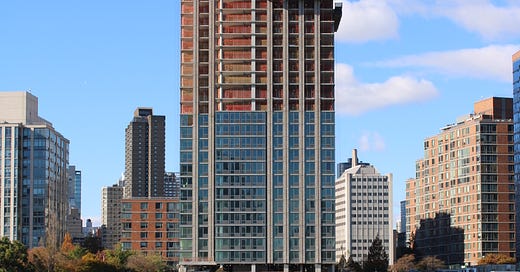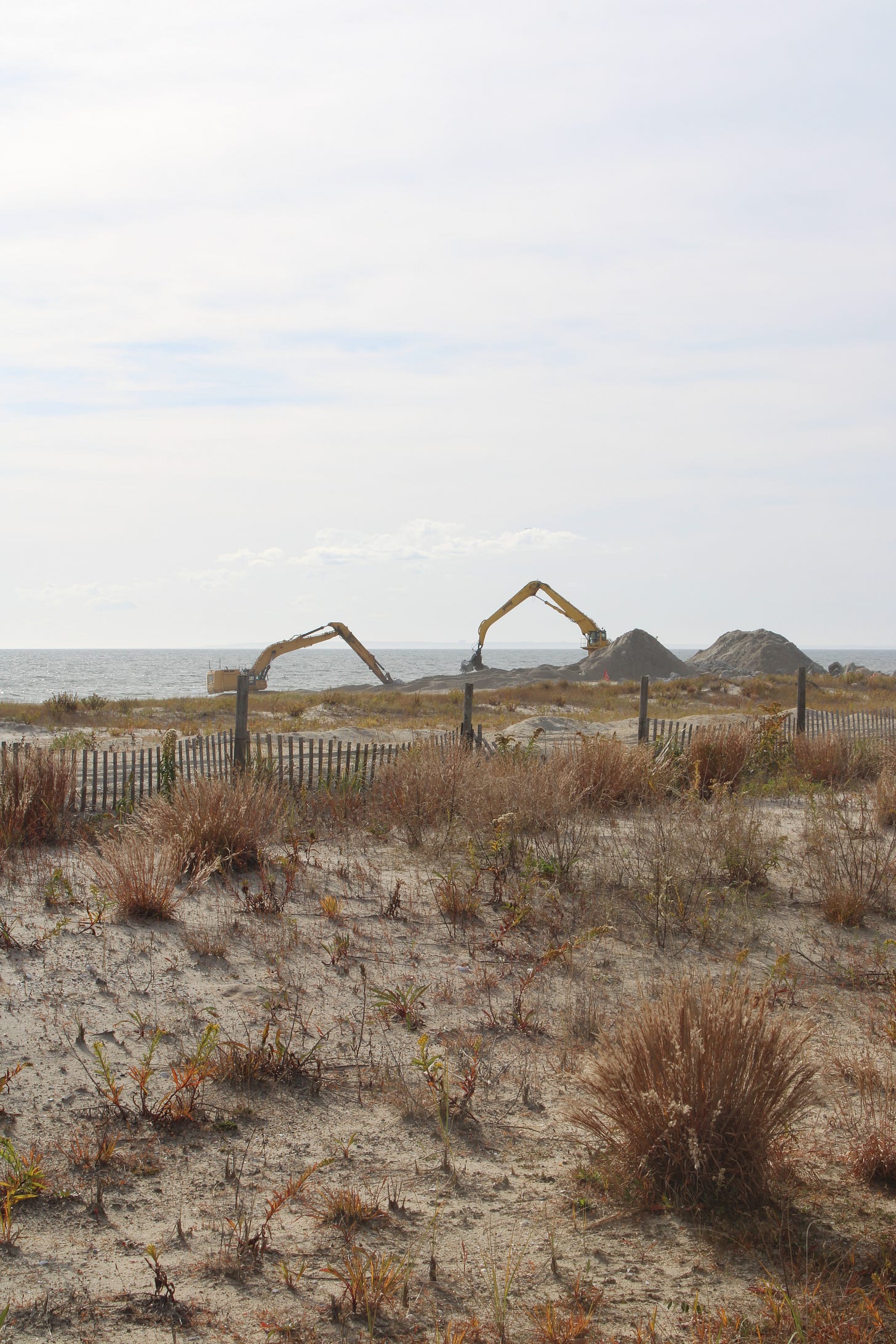Excavators in full motion are cutting through the sandy expanse along the Atlantic Ocean to construct crucial infrastructure protecting inland communities. This signifies the ongoing Atlantic Shorefront Project, a joint initiative involving the City of New York, the New York State Department of Environmental Conservation, and the U.S. Army Corps of Engineers.
Covering nearly ten kilometers of the Rockaway Peninsula beachfront in Queens, the project began in the 1960s in response to frequent storms. Facing delays until 1974, the structure was destroyed by Superstorm Sandy in 2012. The new beach fill project, backed by approximately $336 million in federal funding, involves the construction of a fortified dune system and jetty-like stone groin structures. Initiated in 2020, the project is anticipated to conclude in 2024.
The coastal real estate in the United States, valued at over $1 trillion, remains highly sought after despite its susceptibility to erosion and flooding. While New York is being projected to witness a two-meter sea level rise by the end of the century, real estate actors overlook climate-related risks, and property values in coastal areas do not reflect the potential damage. In Queens, the value of flood-prone properties has risen to over $60 billion, marking a 43% increase since Hurricane Sandy in 2022. Nevertheless, by the 2050s, real estate valued at $72 billion in Queens is estimated to be at risk.
The city’s Resilient Edgemere plan, introduced in 2017, exacerbates the challenges facing vulnerable communities with ongoing market-rate development. It proposes additional market-rate rental housing in inland areas of Rockaway's Edgemere community, a majority low-income Black neighborhood, placing further strain on existing infrastructure and housing stock.
In contrast, the local organization RISE (Rockaway Initiative for Sustainability & Equity) advocates for an alternative approach with the Greater Rockaway Community & Shoreline Enhancement Plan. This initiative actively involves the community in long-term planning and shoreline protection. An emphasis lies in developing skills to maintain, repair and protect infrastructure for creating climate-resilient and equitable cities.





